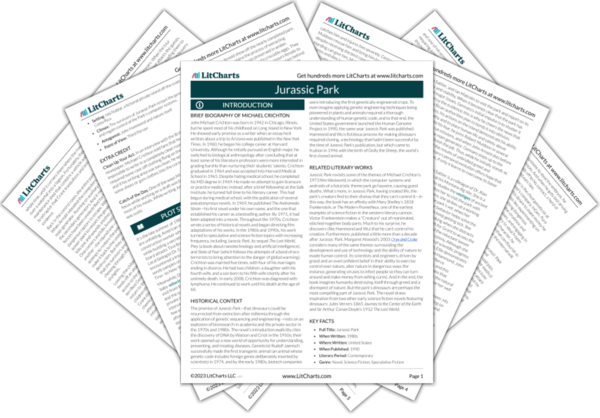AI ToolsNew
Tools to make learning and teaching easier
|
Previous
Fifth Iteration: Search
|
Jurassic Park: Fifth Iteration: Aviary Summary & Analysis |
Next
Fifth Iteration: Tyrannosaur
|


Upgrade to unlock the analysis and theme tracking for all of Jurassic ParkJurassic Park!
Get LitCharts A+